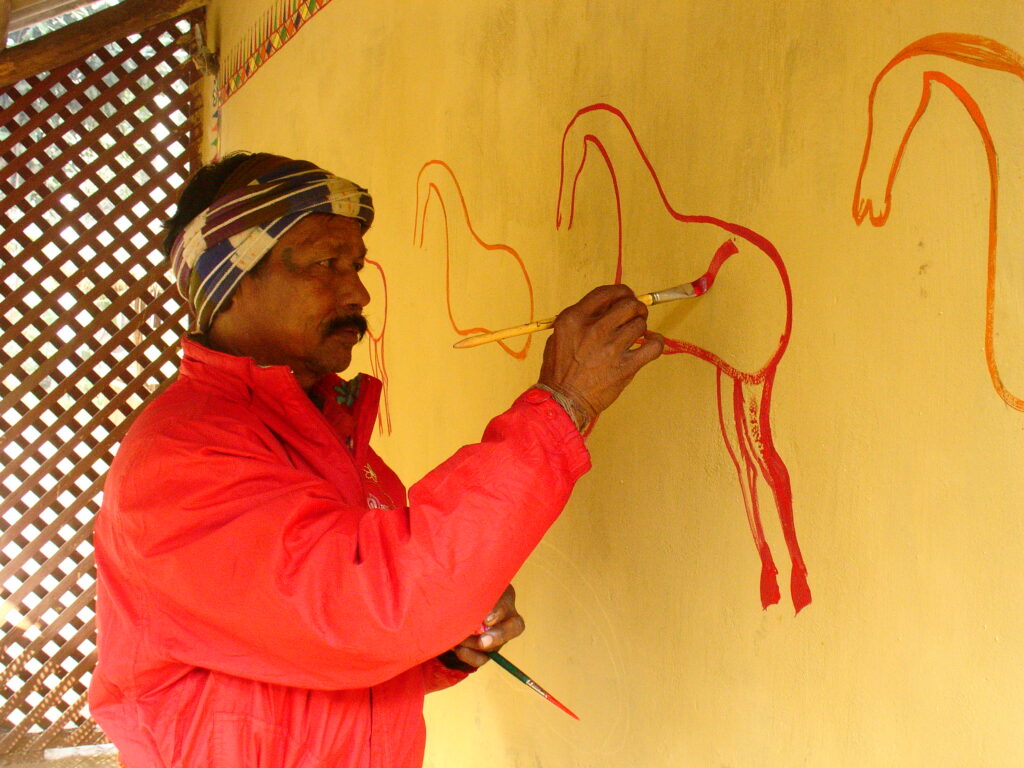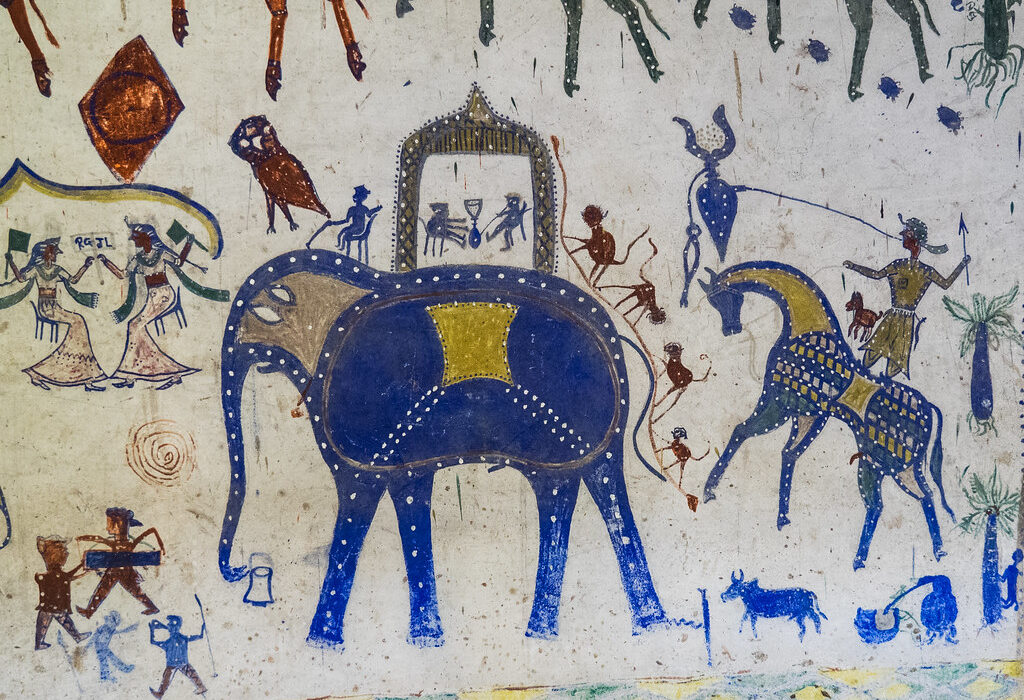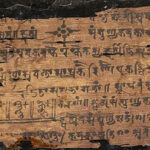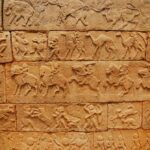Pithora Art Paintings: Sacred Art of the Bhil and Rathwa Tribes
- Vijay Iyer
- June 6, 2023
- 0 Comment
Pithora art paintings, originating from the Bhil and Rathwa tribes of Madhya Pradesh and Gujarat, hold significant cultural and religious importance. These vibrant wall paintings are created as offerings to Baba Pithora, the village deity, during the spring season. With a rich history and deep-rooted symbolism, Pithora art paintings represent sacred art forms that reflect the spiritual beliefs, customs, and rituals of these tribal communities.
In this article, we will delve into the origin, themes, techniques, and significance of Pithora art paintings, shedding light on their cultural and religious heritage.
Origin and Cultural Significance of Pithora Art Paintings
Pithora art paintings have a long-standing tradition within the Bhil and Rathwa tribes, spanning generations. They serve as expressions of gratitude and devotion to Baba Pithora, revered as the protector and provider of the community. These paintings are created to seek blessings for various occasions and milestones, such as the birth of a child, a plentiful harvest, or a marriage. Owning a Pithora art painting is considered a mark of respect and prestige within these tribal societies, symbolizing the connection between the community and its spiritual roots.
Themes and Symbolism in Pithora Art Paintings
Pithora art paintings predominantly feature depictions of horses and riders, each representing a specific deity from the Bhil or Rathwa pantheon. These divine figures, such as Ganhotra Bapa, Raja Bhoj, and Pithoro Deva, are attributed with specific names and powers. The paintings are imbued with profound symbolism and serve as visual narratives of mythological stories and legends.
The upper section of the paintings represents the celestial realm, showcasing gods, celestial beings, the Sun, and the Moon. The lower section portrays various characters and episodes from ancient narratives, including farmers, cowherds, kings, merchants, and forest creatures. Through these motifs, Pithora art paintings convey the interconnectedness between the divine, human, and natural realms.
Technique and Ritual of Pithora Art Paintings
Creating a Pithora art painting is not merely an artistic process but a ritualistic affair that involves the entire community. The first step is preparing the wall surface, which is coated with a mixture of clay and dung plaster. Unmarried girls play a significant role in this step, as they apply the plaster with great care and precision.
The horse motifs, which are central to Pithora art, are then drawn using a combination of hand and block printing techniques. The outlines of the figures are marked using knife incisions, and the vibrant colors are applied using pigments mixed with milk and water.
Traditional brushes made from branches of the tesu or Palash tree are used to achieve intricate details and fluid strokes. The resulting paintings display a harmonious blend of colors, rhythm, balance, and movement, capturing the essence of the artistic and spiritual expression.
Community Participation and Celebration of Pithora Art Paintings
The creation of a Pithora art painting is a collaborative effort that involves the participation of the entire community. This communal engagement strengthens the bonds within the tribe and reinforces a shared cultural identity. The process of creating the painting is accompanied by narration, singing, and drumming, which create a lively and celebratory atmosphere.
Once the painting is completed, a professional drummer arrives, and the head priest (badvo) performs a ritual to identify and offer respect to the figures depicted in the painting. The stories associated with the mythological episodes portrayed in the artwork are recounted, serving as a means to connect the community with its ancestral heritage and reinforce cultural traditions.
Preservation and Cultural Heritage of Pithora Art Paintings
Pithora art paintings hold immense value as a part of India’s artistic and cultural heritage. While the Bhil and Rathwa tribes continue to practice and pass down this art form through generations, efforts are being made to preserve and promote Pithora art paintings beyond their traditional boundaries.
Recognizing their cultural significance, organizations and individuals are working towards safeguarding this unique artistic tradition. Through exhibitions, workshops, and documentation, Pithora art paintings are gaining recognition and appreciation beyond their tribal communities. These efforts aim to ensure the longevity of this invaluable cultural heritage and the artistic skills of these tribal communities.

Pithora art paintings are more than visually striking artworks; they are sacred expressions of devotion, gratitude, and cultural identity. With their intricate designs, vibrant colors, and mythical symbolism, these paintings serve as a bridge connecting the Bhil and Rathwa tribes to their ancient beliefs and ancestral narratives.
By embracing and cherishing Pithora art paintings, we pay homage to the spiritual traditions and artistic abilities of these tribal communities, ensuring that their cultural heritage thrives for generations to come. These unique art forms remind us of the power of art to preserve history, transmit cultural values, and inspire unity among diverse communities.








